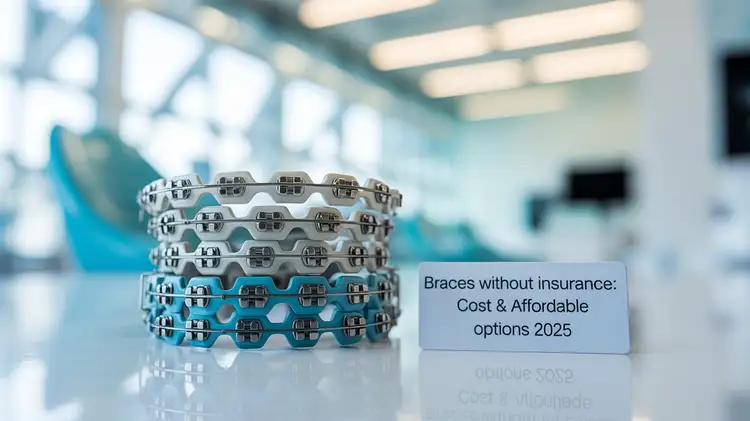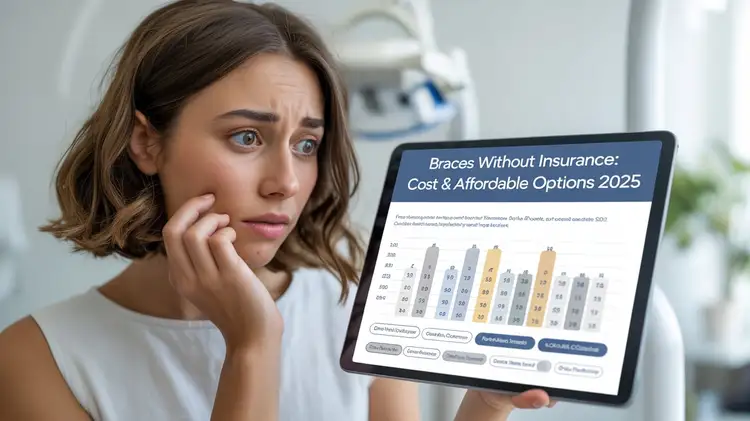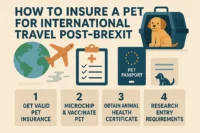Braces Without Insurance: Cost & Affordable Options 2025
Published: 30 Jul 2025
Introduction
Braces form a vital investment in both oral health and personal confidence, yet without insurance, the sticker shock can land hard on most budgets. Whether the goal is a winning smile or relief from serious bite issues, the price tag of straightening teeth out of pocket quickly grows into a weighty financial commitment.
This guide looks ahead to 2025 to describe average prices, explore budget-friendly options and offer practical strategies for easing payment pressures. If paying for braces without insurance feels like an uphill climb, the insights that follow can steer you toward a healthy, attractive smile while guarding your bottom line.
Cost of Braces Without Insurance in 2025
Average Cost of Braces Without Insurance
Fees charged to patients carrying no dental plan will hinge on factors such as appliance style, estimated treatment length and local market conditions. In 2025, the out-of-pocket range for full braces in the United States will likely sit between $3,000 and $7,000.
- What’s Included: The quoted figure generally covers the brackets, wires, routine adjustments and necessary follow-up appointments spread across months or years of treatment.
- Why It Matters: Knowing the average outlay for braces lets you plan your budget and set aside extra money for unforeseen costs that might pop up during treatment.

Braces Options and Their Price Tags
Orthodontists offer a range of brace styles and fees shift with each choice. Below are the most popular options and what they typically cost:
- Metal Braces: As the oldest and most straightforward system, metal braces sit on the front of the teeth and usually run $3,000 to $7,000.
- Ceramic Braces: Made from tooth-colored material, these brackets blend in more easily and cost roughly $4,000 to $8,000.
- Lingual Braces: Attached to the tongue-side surface, they remain nearly invisible but demand greater lab time, bringing fees of $8,000 to $10,000.
- Invisalign: This removable, clear-aligner kit appeals to many adults and teenagers who want discretion; it ranges from $3,500 to $8,000 based on treatment length and complexity.
What’s Covered: Every appliance requires regular adjustments, so plan for checkup visits that allow the orthodontist to fine-tune the fit and movement.
Why It Matters: Your budget, daily routine and need for subtlety should guide the final decision, since each style delivers straight teeth but with different looks, costs and care schedules.
Affordable Options for Braces Without Insurance
Payment Plans and Financing Options
A practical way to handle the cost of braces with no insurance is to use in-house payment plans or outside financing. Most orthodontic offices either set up their own terms or work with a lender who lets patients pay over months or years. Dividing the bill this way turns a large up-front charge into smaller, regular amounts buyers can budget.
- What’s Covered: Many agreements carry no interest for an introductory period or spell out fixed monthly sums that clear the balance within an agreed time.
- Why It’s Important: Such financing makes necessary treatment accessible right now instead of forcing families to save for years, speedily improving dental health and confidence.

Dental Schools and Clinics
Students learning orthodontics at accredited dental schools provide braces for far less cash because supervisors monitor every step. The hands-on education model can trim total fees by up to 50 percent while still upholding strict clinical standards.
What’s Covered: Patients receive the complete course of care, from initial molds and wire placement through periodic adjustments until the final brackets come off.
Why It’s Important: For budget-minded individuals, these teaching clinics combine professional oversight with lower prices, offering a remarkable value without sacrificing quality.

Medicaid and State Programs
Individuals who meet Medicaid eligibility criteria may receive orthodontic appliances such as braces at little or no out-of-pocket expense. Because rules governing dental coverage differ from one state to the next, confirming specifics with the local Medicaid office is the best way to establish whether dental assistance is available.
What is Covered: Depending on state policy and the patient’s clinical need, Medicaid may fund either the entire cost of braces or only a portion.
Why it Matters: For low-income families who lack private insurance, Medicaid remains a vital avenue for accessing necessary orthodontic treatment without accruing unaffordable debt.
Dental Discount Plans
Dental discount plans serve as a lower-cost alternative to traditional insurance by presenting members with pre-negotiated fees for a wide range of services, braces included, when care is delivered by network providers. Although participants pay an annual membership, savings on orthodontic work can quickly exceed the upfront charge.
- What is Covered: The plan generally reduces the standard price of braces and related procedures, allowing families to budget more effectively.
- Why it Matters: Individuals who lack comprehensive dental insurance or wish to avoid lengthy waiting periods often find that discount plans open the door to timely, affordable orthodontic care.

Flexible Spending Accounts (FSAs) and Health Savings Accounts (HSAs)
When your workplace sponsors a Flexible Spending Account or a Health Savings Account, you can tap those pretax dollars to pay for braces. Both programs let you park funds for medical care orthodontic work included, lowering the taxable income that shrinks your real out-of-pocket cost.
- What’s Covered: HSA or FSA cash can settle bills for the braces themselves as well as exams, X-rays, retainers and any follow-up visits, smoothing the whole treatment pathway.
- Why It’s Important: Each dollar withdrawn from those accounts skips payroll tax and, in many cases, state tax too, so leveraging them can yield sizeable savings while your smile straightens.

Factors That Affect the Cost of Braces Without Insurance
Location
Where you seek treatment matters. Braces in a bustling city or well-off suburb often carry a premium because overhead is high, staff salaries reflect the local economy and demand for top-tier specialists can drive prices north of the national average. In contrast, rural practices or small towns may quote much lower fees, as their living costs and competition shape a gentler market.
- What’s Covered: Basic pricing usually mirrors this pattern; large metropolitan clinics charge more for nearly every aspect of orthodontic care, from initial scans to monthly adjustments.
- Why It’s Important: Shopping around and comparing quotes from different neighborhoods—or even states—can uncover savings that leave room for add-on services, retainers or that coveted early finish.
Length of Treatment
The total money you spend on braces rises with each extra month you wear them. Most plans run between eighteen and thirty-six months, yet severe or stubborn problems sometimes require years, pushing the bill even higher. As a rule, the more challenging your teeth are to move, the longer and pricier, the job becomes.
- What’s Covered: Extended or complicated programs naturally attract greater fees.
- What’s Important: Because time influences both the final figure and the payment plans your clinic can offer, discuss possible length at your first meeting.
Type of Braces
The actual hardware on your teeth also shapes the cost. Standard metal brackets remain the cheapest option, while nearly-invisible aligners such as Invisalign or behind-the-teeth lingual braces jump the price quite a bit.
- What’s Covered: Clear and hidden systems commonly add several hundred dollars to the tab over traditional metal.
- What’s Important: Pick a style that suits your wallet as well as your smile.
Orthodontist Experience
Veteran orthodontists often charge a premium because they bring years of training and case insight. Although a rookie provider may seem cheap on paper, mistakes from inexperience can lead to extra months of wear or even retreatment down the road.
- What is Covered: The clinic’s fees hinge on the orthodontist’s skill, track record and the clinic’s overall standing in the community.
- Why it Matters: An orthodontist with a solid reputation and solid experience often translates into better outcomes, so weigh these factors.

How to Cut the Cost of Braces When You Lack Insurance
Gather Estimates from Several Practices
A straightforward way to save is to request cost estimates from a handful of local offices and compare them side by side. Charges can differ markedly depending on overhead, location and the specialist fee structure, so shopping around may yield a better rate.
- What is Covered: By reviewing several breakdowns, you can spot which team includes all necessary services for the lowest total.
- Why it Matters: Informed choices guard against paying a premium for identical treatment simply because one office was closest.
Ask About Special Offers
Ongoing promotions, seasonal price cuts or flexible payment plans are common, so never hesitate to inquire directly about available savings. Even minor adjustments to the initial bill can compound across the full treatment period and lighten your financial load.
- What is Covered: Incentives that reduce the basic fee or ease the burden of a large single payment.
- Why it Matters: Taking advantage of these turn-to-discounts moves the goal of a healthier smile within reach instead of out of budget.
Keep Up a Steady Oral-Care Routine
Brushing, flossing and rinsing well every day help keep teeth and gums in good shape. When mouths stay healthy during braces, there is much less chance of extra trips for fillings or gum treatment and fewer trips mean spending a lot less money.
- What Is Covered: Routine cleanings, cavity-free teeth and strong gums.
- Why It Matters: Healthy teeth help treatment move along smoothly, cut the risk of delays and lessen the total cost of braces.

FAQs
When insurance is not involved, the price of braces can fall between $3,000 and $7,000; the exact amount depends on the brace type and how long the work must be done.
Yes, patients without insurance can still receive braces. Many orthodontic offices provide in-house financing, step-by-step payment plans and lower-cost systems so care remains accessible.
Standard metal braces usually hold the title of the most budget-friendly option. For these appliances, patients can expect a bill in the rough range of $3,000 to $6,000.
Absolutely; most practices design flexible plans with modest interest and easy monthly amounts so that even those without insurance can afford the smile they deserve.
On average, people wear braces for 18 to 36 months, but exact timing hinges on the severity of misalignment and the style of appliance selected.
Conclusion
Orthodontic treatment improves both health and confidence, yet out-of-pocket expenses can strain family budgets when insurance falls short. The good news is that cost can be eased through structured payment plans, low-interest financing and provider discounts aimed at making care accessible. By learning typical fees, weighing available alternatives and pursuing saving strategies, any patient can keep the pathway toward a straighter smile within reasonable financial reach.

As 2025 approaches, budget-friendly avenues continue to expand, with care offered through dental schools, Medicaid benefits in some states and pre-tax contributions from flexible spending accounts. Taking time to compare these resources and speaking openly with your orthodontist about affordability may allow you to secure the treatment you need without undue debt. With thoughtful planning, a healthy, radiant smile is closer than it appears.

- Be Respectful
- Stay Relevant
- Stay Positive
- True Feedback
- Encourage Discussion
- Avoid Spamming
- No Fake News
- Don't Copy-Paste
- No Personal Attacks

- Be Respectful
- Stay Relevant
- Stay Positive
- True Feedback
- Encourage Discussion
- Avoid Spamming
- No Fake News
- Don't Copy-Paste
- No Personal Attacks





